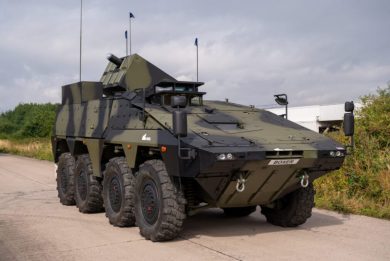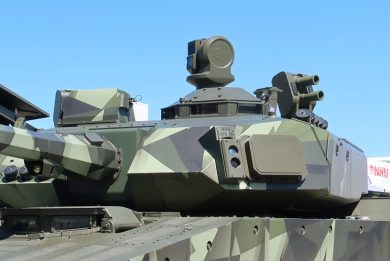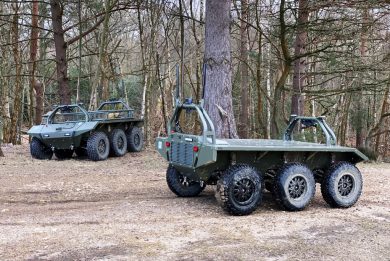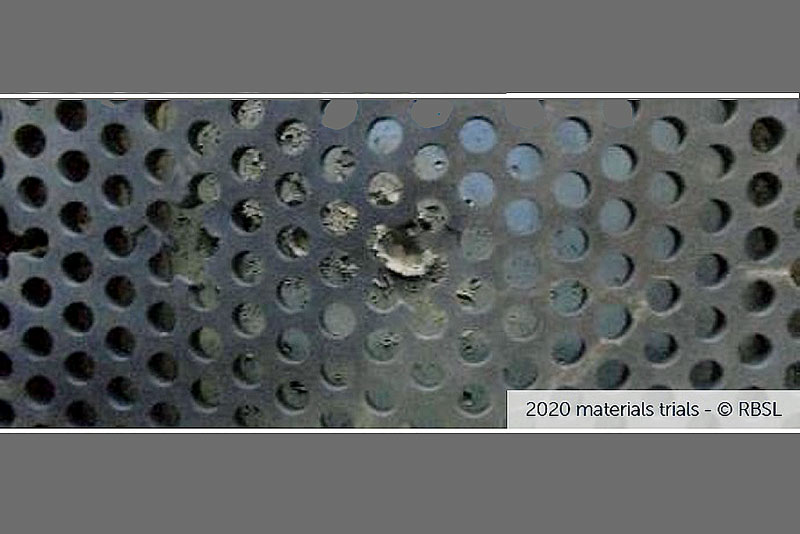
IAV Conference: RBSL unveils new passive armour
By Paolo Valpolini
Speaking at the International Armoured Vehicles Conference, organised virtually by Defence iQ, Tony Wilkes, Head of Export Sales at RBSL, the Rheinmetall BAE Systems Land joint venture formed in July 2019, illustrated the company capabilities in the protection area, which was the subject of the conference Week 2 Day 1. After underlining the work done on upgrade programmes related to British Army armoured vehicles, he described RBSL holistic approach in product design in order to ensure that one capability does not compromise the other ones. Signature management, field of view, platform weight, transportability, ruggedness and ease of fitting, are all key aspects to be considered. “Thanks to our in-house research and development capability we can offer our customers off-the-shelf armour systems that can be fitted directly to their vehicles,” Wilkes states, adding that this is a low cost quick turn around option to improve vehicles’ protection levels. “Alternatively we can work with our customers to design for them a bespoke system that will provide an optimised protection scheme for their vehicles.”
“In order to ensure we stay at the forefront of protection we continue to perform in-house research on material and manufacturing techniques,” Tony Wilkes says, explaining that this allows the company will continue producing the best possible products. As an example he mentioned the company leadership of the team working on UK DSTL’s (Defence Science and Technology Laboratory) ATiTUDE programme, the acronym standing for Affordable Titanium for Defence, which aims at encouraging the use of that material in non-aerospace applications, vehicle armour being one of potential uses. The team includes industry and academia, and the outcome of the programme is planned for 2024. According to RBSL’s export manager this research fits in a product pipeline that is already providing two advanced armour materials that he described in his briefing, which aim at improving protection while keeping weight under control, a need that is becoming a key issue as high intensity conflict probabilities are increasing.
The first new armour proposed by RBSL is named Telford Enhanced Spaced Armour (TESA); the picture shown was that of a hardened steel plate with an array of holes, these interacting with incoming projectiles, as Wilkes explained. “There are three different mechanisms occurring within perforated armour plates,” he says; “firstly, asymmetric forces act on the projectile, deviating its trajectory making it striking the vehicle at an unfavourable angle, secondly, the projectile core can fracture, and finally there is projectile core nose erosion.” Such a plate would be mounted away from the vehicle hull, the gap ensuring the room for the projectile to deviate and tumble before the fragments hit the vehicle’s hull. RBSL utilised a novel geometry within the structure of the armour so that a projectile interacts with the perforated plate at an oblique angle, allowing to design an armour that provides higher protection at the same mass of current armour, or make much lighter armour at equivalent protection level. Generating a greater yaw in the projectile, Wilkes continues, allows reducing standoff distance, hence minimising the increase in the vehicle’s profile, width being often an issue, especially when operating in urban areas. As typical in perforated armour, it maintains good multi-hit performances and ensures graceful degradation. Armour packages were designed to be fully enclosed with the front cover plate, which not only improves ballistic performances but also minimises the dust ingress, facilitating armour maintenance, the RBSL representative says. Equipment mounting points can be fitted to the external face while RBSL is ready to provide neutral buoyancy packages to be used on amphibious vehicles, while an external skin can be added to control the vehicle’s radar cross section. Being steel-made, it is durable, panels can be fixed, or can be easily replaced in case of damage, possibly also on the field. “The design can be adjusted in order to tailor the armour to the customer’s specific requirements,” Wilkes adds, “the design allowing to satisfy STANAG 4569 Level 4 or Level 5 protection.” Of course the kit geometry will be designed according to the specific vehicle, some panels being hinged in order to allow easy access to some elements for maintenance purposes. The key data is that at same protection level the Telford Enhanced Spaced Armour weighs 20% less than current equivalent perforated armours, or 50% lighter than homogeneous armour, which allows to be competitive in weight, performance and costs, according to the RBSL representative. “This armour is currently in the final stage of development, armour packages been taken through validation trials,” Wilkes states, “and we intend to launch the product later this year,” DSEI being probably the best launch platform. RBSL is ready to provide full turnkey solutions, designing, integrating and installing the system on customer’s vehicles, or providing armour panels or installation kits to the customer, or finally the company is ready to license the product for in-country production by local industry.
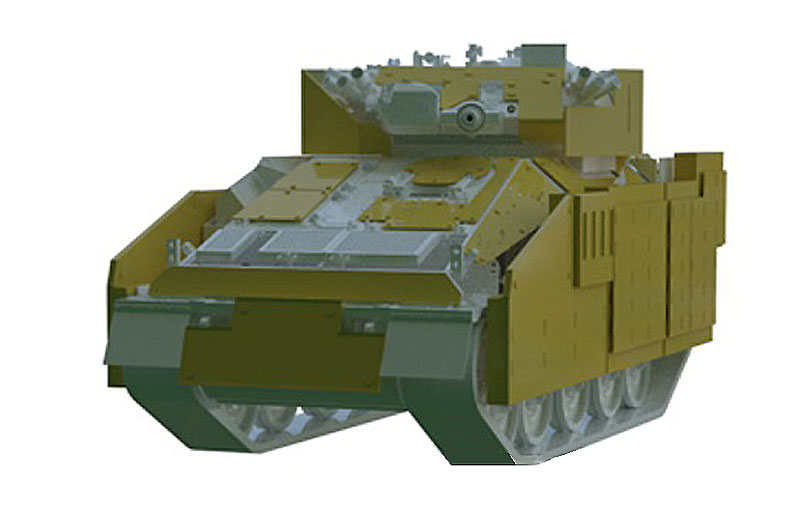
Shifting from steel to ceramic, Tony Wilkes introduced the second novel product, known as Telford Enhanced Ceramic Armour (TECA). “It’s a really exciting development and is based on a novel encapsulated ceramic to deliver an armour system which can be configured to deliver STANAG 4569 Level 4 protection all the way up to Level 6+ [1],” the RSBL Head of Export Sales tells the audience. To cope with Level 6+ protection levels a massive plate armour with a significant mass is usually needed; compared to Rolled Homogeneous Armour (RHA) the new solution proposed by RBSL weighs one quarter. “Blending the best properties of the matrix and ceramic components the new designs are delivering really promising results,” Wilkes adds. The new armour plates are mounted directly on the vehicle hull, which keeps the dimensions increase to a minimum. “Unlike conventional ceramic armours the Telford Enhanced Ceramic Armour demonstrates good multi-hit capabilities,” he underlines, adding that it can also easily integrated, while the fact that ceramics are encapsulated in metal simplifies mounting issues and ensures optimal durability, as ceramics are not subject to everyday impacts and to environmental stress. This makes maintenance duties similar to those used for metallic armour. “This development delivers cost efficiencies as well,” Wilkes notes, touching a key issue as ceramic armour usually tend to considerably increase the cost of the armour solution. “The design of our armour is such that the manufacturing is far easier than the traditional labour-intense hand fabrication of other ceramic armours,” he states, adding that the cost of the Telford Enhanced Ceramic Armour is around 20% lower that conventional equivalent ceramic armours and is comparable to equivalent titanium armour plates, although it is considerably lighter than the latter. “This new armour is currently in late stages of development, the next steps being full panel build,” Wilkes says, performance trials being scheduled across 2021, RBSL being confident on their success and looks forward integrating its new ceramic armour solution in the next few years.
Images courtesy RBSL
[1] Level 6 means withstanding 30 mm APFSDS or AP rounds at 500 meters distance

